Bayou Segnette State Park, Westwego, Louisiana (New Orleans)
We have new neighbors now that the car/tent people have moved on. We want them back. These new ones have two little yappy dogs who don’t seem to have an off switch. Ugh!
Our “Dr. Gumbo” food tour didn’t start until 1pm, so we had some time to walk around again. There were a couple of places that Eric mentioned yesterday as places to visit, so we thought we’d check some of them out.
Since we’ve been on the ferry before, we know what to do today, so when we ran across a bronze statue of Louis Armstrong, I took the time to take a picture. 😊

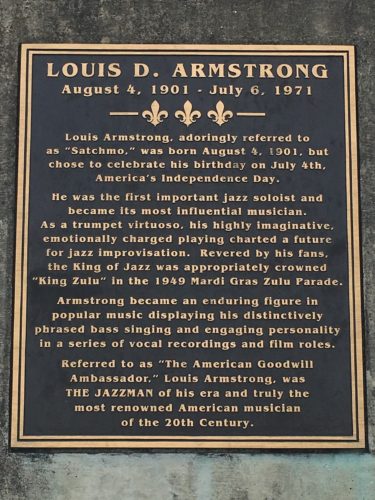
There was a huge cargo ship cruising by and it was obvious that our ferry needed to wait for them. Good thing!


Look how close that is!

This guy was laying in the “sreet” right at the crosswalk between Cafe du Monde and the apartment building.
How do they DO that???
Once in town, we headed over to one of the apartment buildings to take a look. Here’s what a tour brochure says about these buildings: Micaela Almonester de Pontalba, the daughter of the colony’s richest man in the Spanish period, Don Andres Almonester y Roxas, built the great twin buildings which bear her name, as luxury apartments and fine ground floor offices and shops. Work began in 1840 on the 16 row houses and was completed in 1849. The almost identical row on the opposite side of Jackson Square was finished in 1851.
Eric told us yesterday that if you go into the museum, they have one of the apartments reconstructed to look like it did when they were rented out in the 1800’s. It’s called the “1850’s House Museum”. Here’s what the same brochure says: Here a three-story section of one of the two Pontalba Buildings has been beautifully restored to present a typical New Orleans dwelling of 1850. It is furnished with authentic New Orleans appointments of the mid-nineteenth century.
Let’s tour!
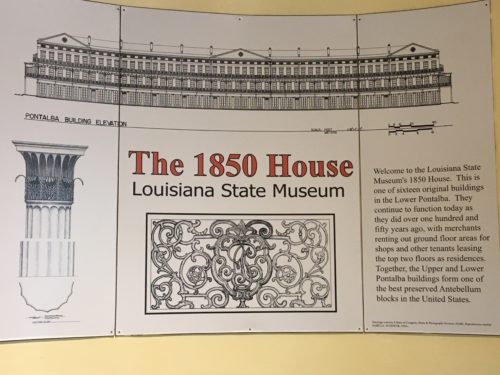

Through this door, lies the staircase up to the apartment.
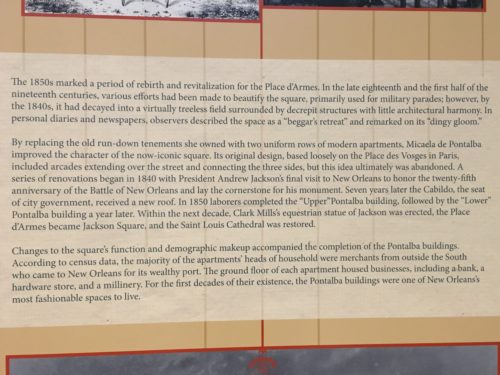
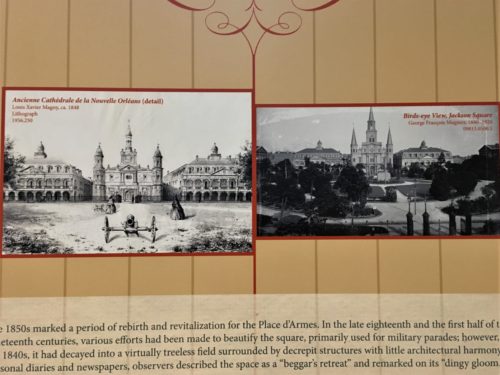
These are before and after pictures of the Cathedral
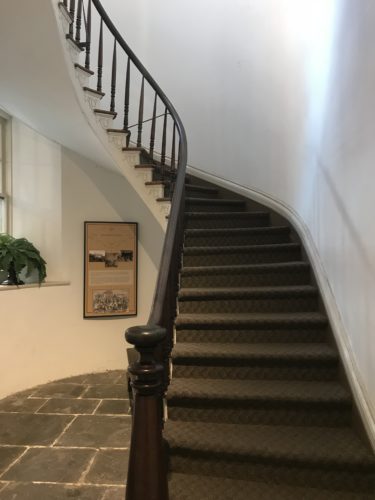
That’s quite a climb with groceries!
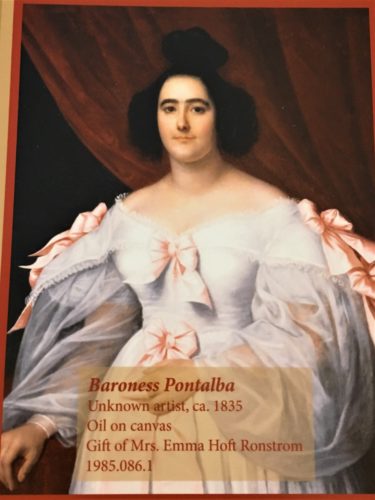
Remember her?
This is where I got yesterday’s picture from. : )
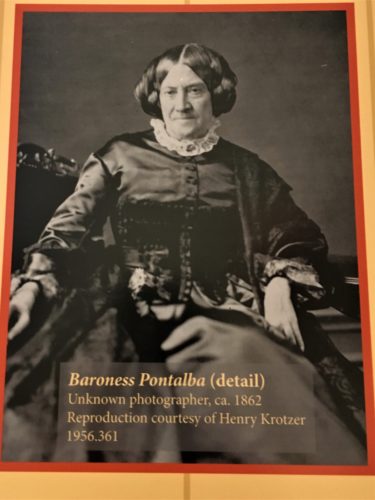
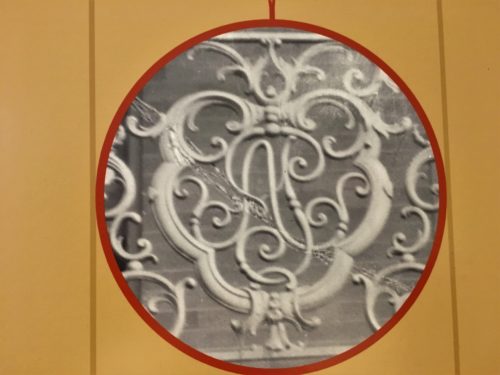
Now you can see the initials she has custom designed into the ironwork of the apartment buildings.
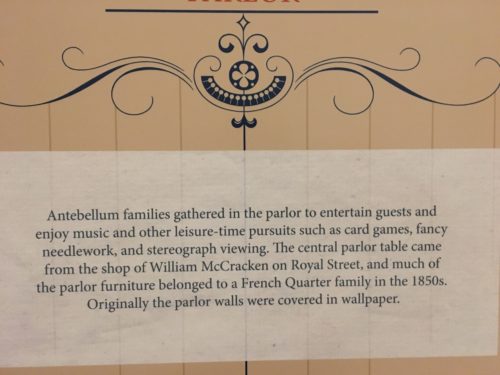
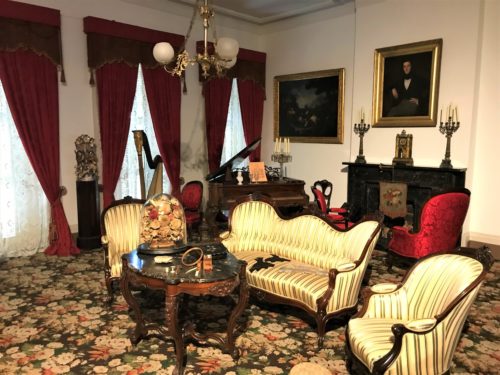
The Parlor
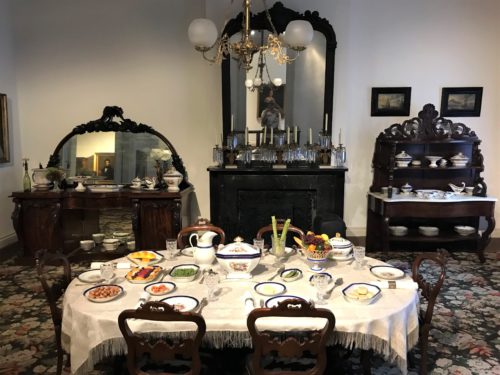
The Dining Room
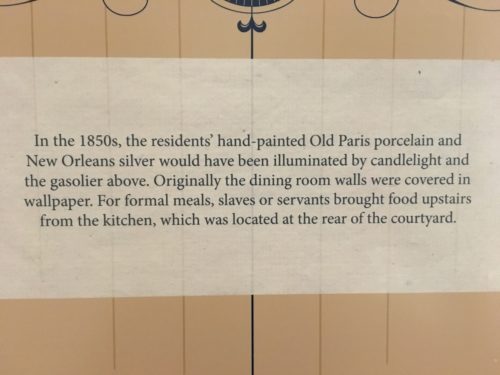
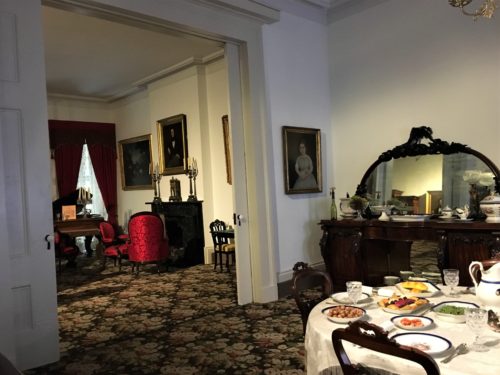
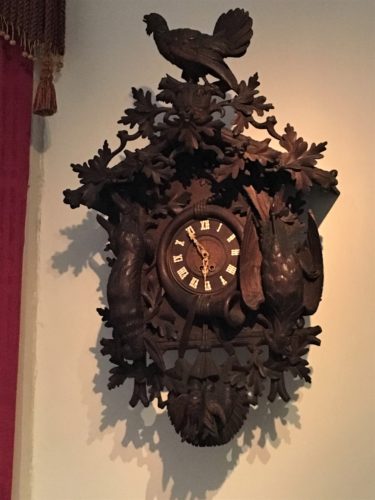
This was in the dining room
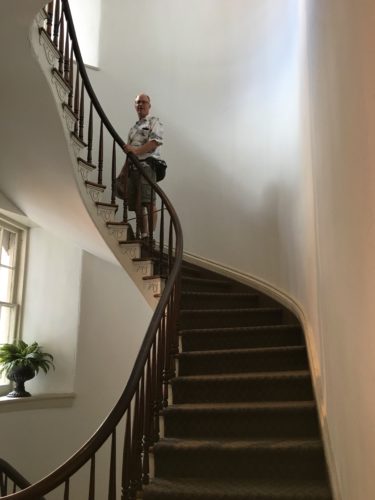
Heading up to the third floor of the building, second floor of the apartment. The third floor contains the bedrooms.
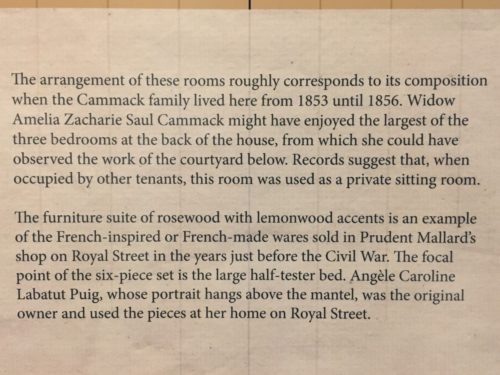
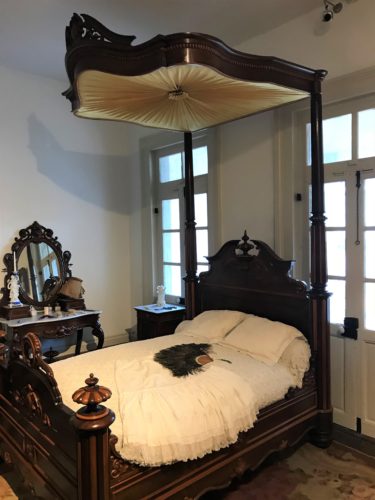
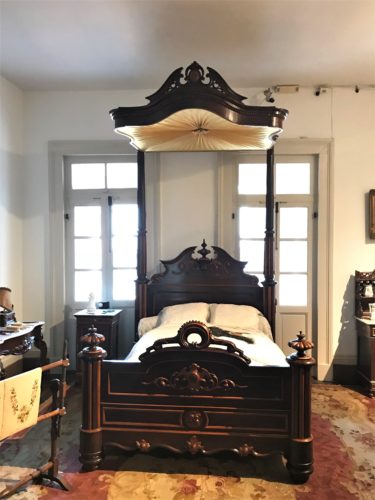
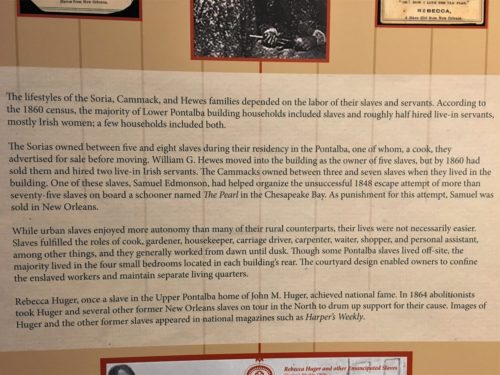
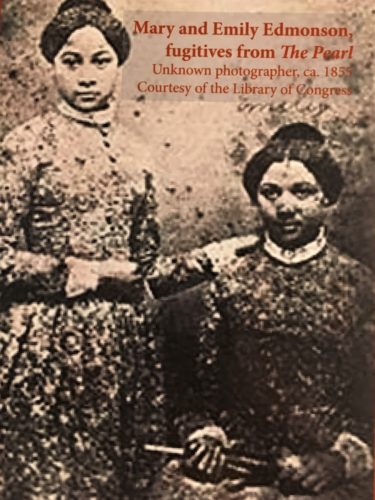
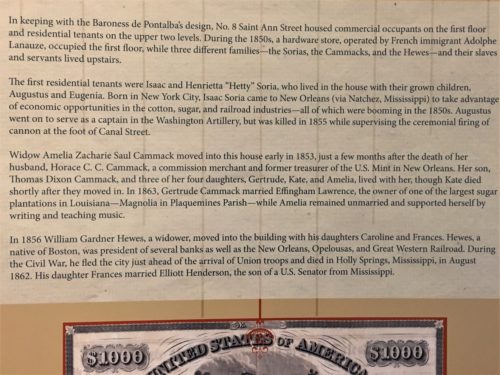
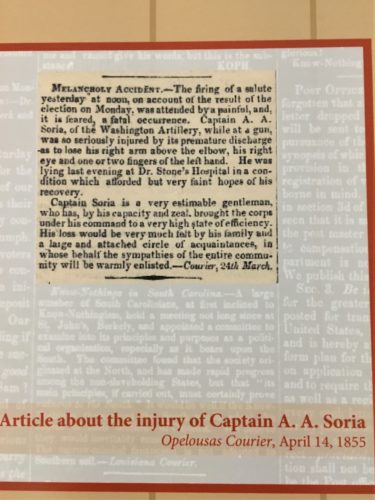
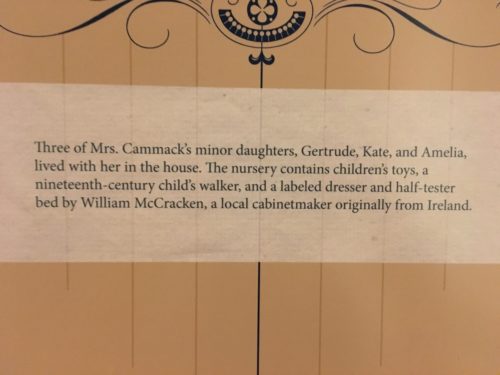
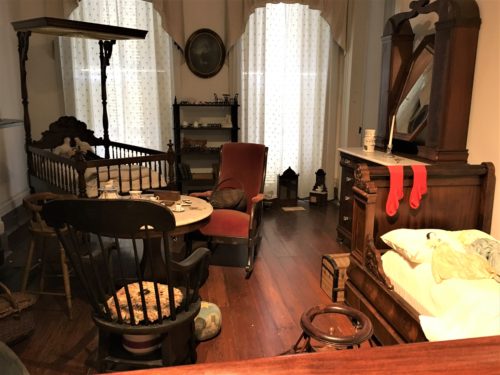
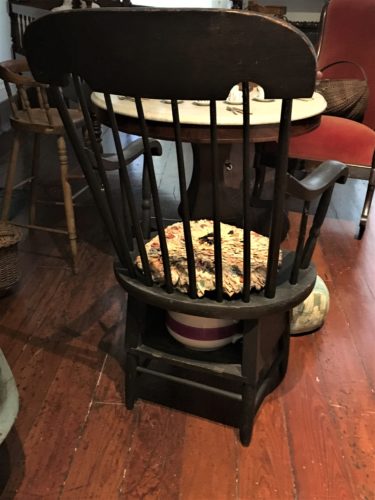
Notice the pot under the seat cusion?
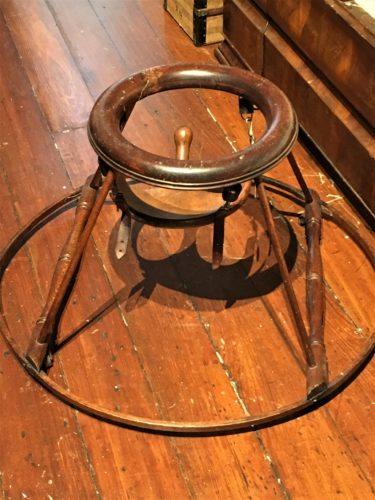
This is an 1850’s baby walker.
Sure is a difference 160 years later!
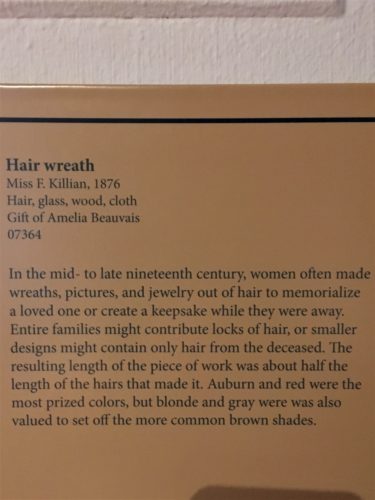
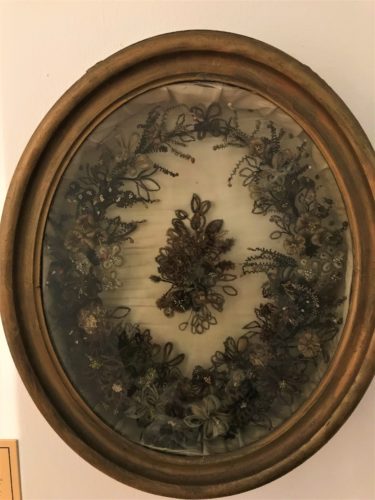
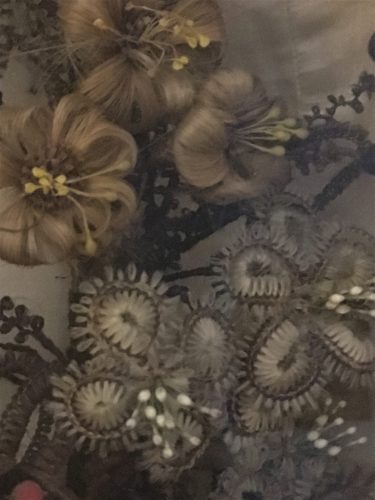
Isn’t that amazing?!?!?!?
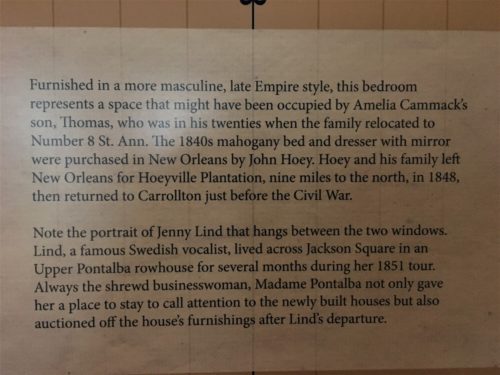
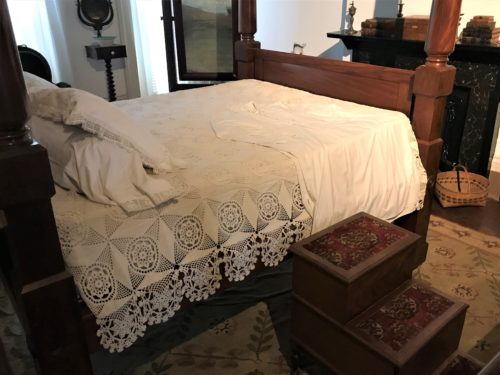
I remember seeing Jenny Lind’s portrait on the wall, but it must have been too far away to take a picture . . .

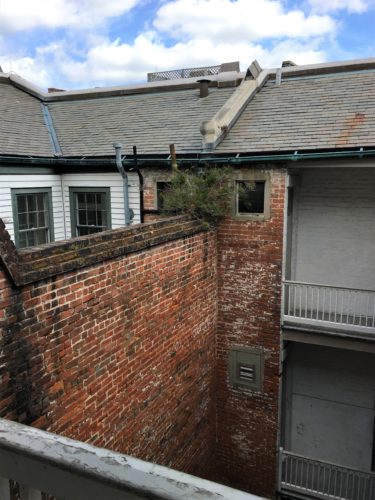
The view of the top of the courtyard area and part of the servant area

Blaine’s on the servant side, I’m on the tenant side
The next few pictures are of the servant slave’s quarters.
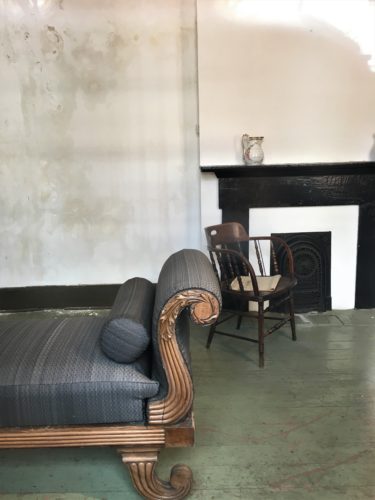
A bit of a difference here . . .
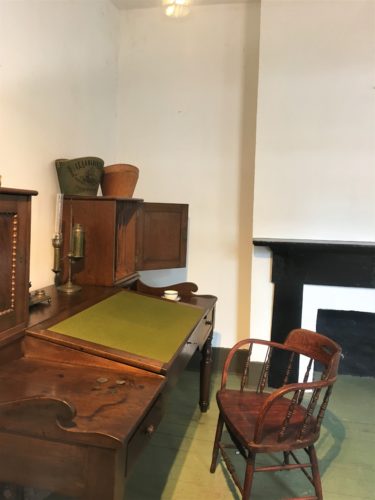
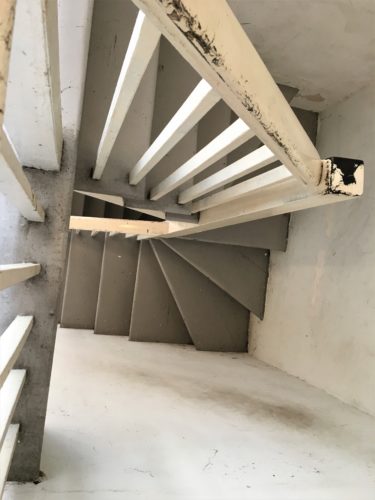
This is their stairway.
It was really narrow!


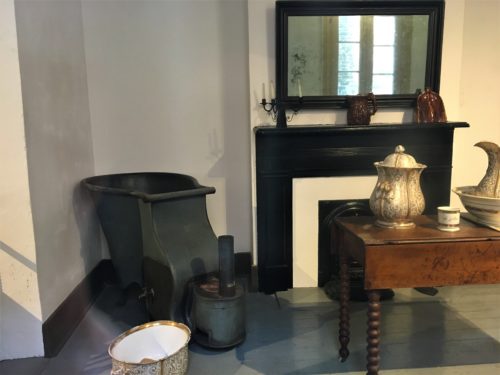
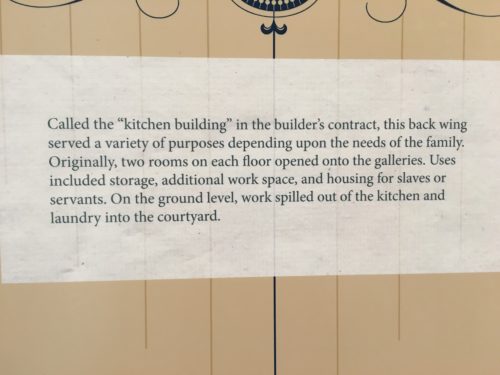
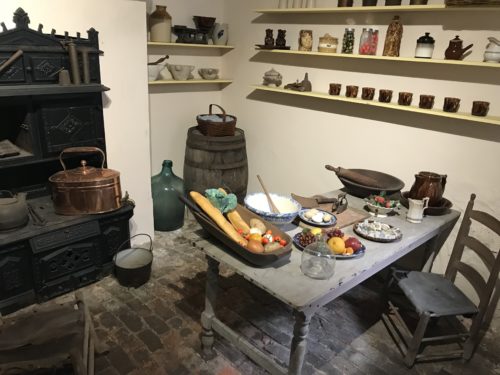
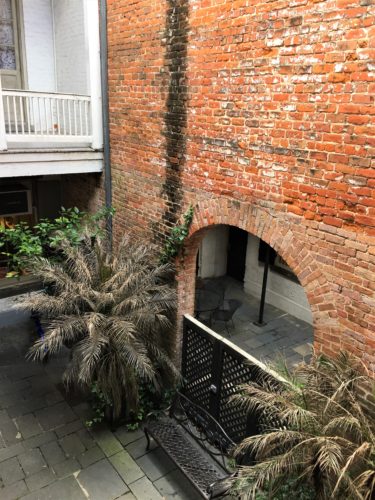
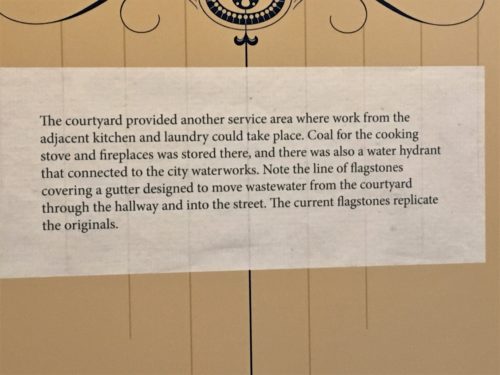
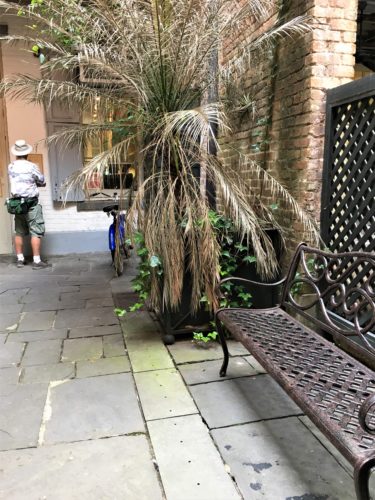
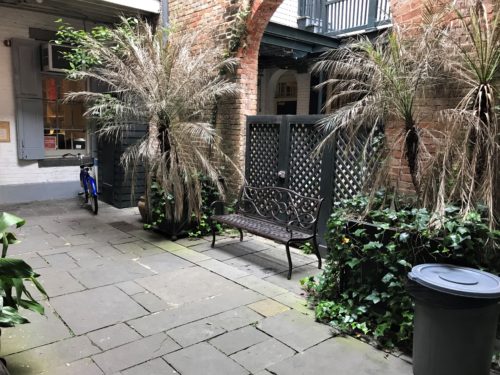
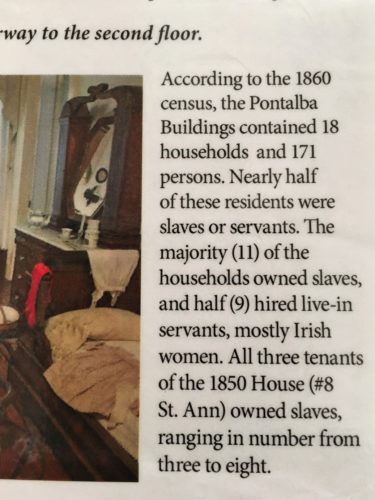
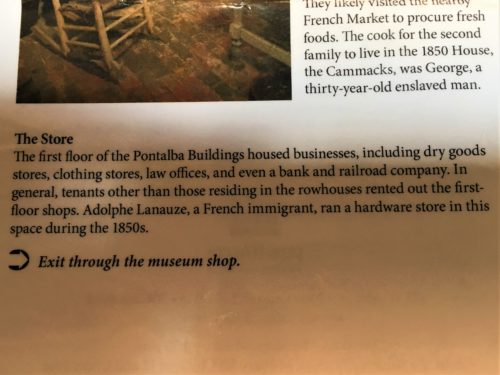
After this, we walked toward the Cathedral, passing some interesting/artistic things along the way.
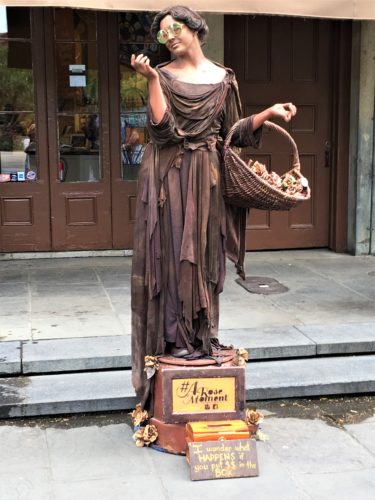
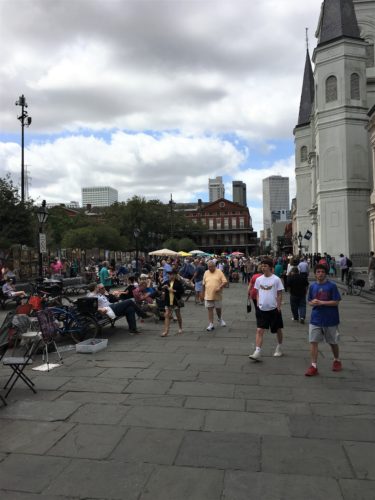
We were able to get inside the St. Louis Cathedral today! Here’s a brief description of its history:
Parishioners have been worshiping in this location since 1727. It’s the oldest continuously active Roman Catholic Cathedral in the US. In 1788, a candle in someone’s house caught their lace draperies and much of the area burned – including the church and priests’ residence.
A new church building was begun a year later and was completed in 1794. By the early 1800’s, the church was in need of restoration. And then the Baroness (we talked about her yesterday) got permission to upgrade the twin buildings on either side of the Cathedral, and not to be outdone (“something had to be done to the Cathedral to bring it to proper scale”), the Diosese agreed to renovate in 1849. However, when they began, the building was in such bad shape that walls started collapsing. The present structure was completed in the 1850’s.
The pope came to visit in September, 1987 and shortly thereafter, the status of the Cathedral was upgraded to a Basilica.
The St. Louis Cathedral is one of New Orleans’ most notable landmarks. This venerable building, its triple steeples towering above its historic neighbors, the Cabildo and the Presbytere – looks down benignly on the green of the Square and General Andrew Jackson on his bronze horse and on the block-long Pontalba Buildings with their lacy ironwork galleries. Truly, this is the heart of old New Orleans. ~ from their website
It’s gorgeous inside! Not quite as gorgeous as St. John the Baptist we visited in Savannah, but still stunning!
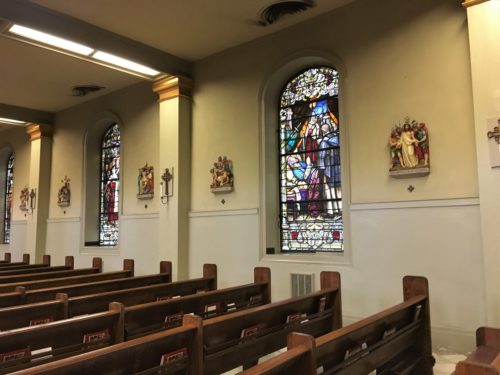

To us, this is just a really odd painting.
It looked like red puppet strings attaching the “monk” or whoever to Jesus. ?????
I tried to capture the music they were playing, but it didn’t come out very well. It really sounded nice – very calming. Accapella priest chanting. (or something like that)
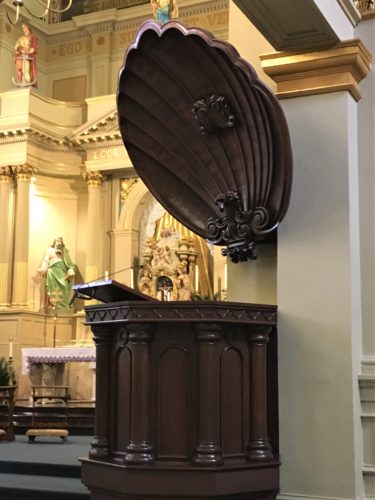
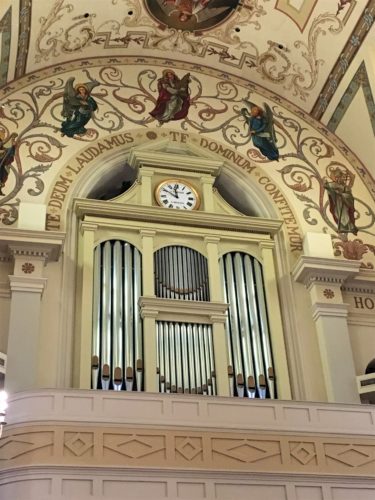
We Praise You
Lord We priase Thee
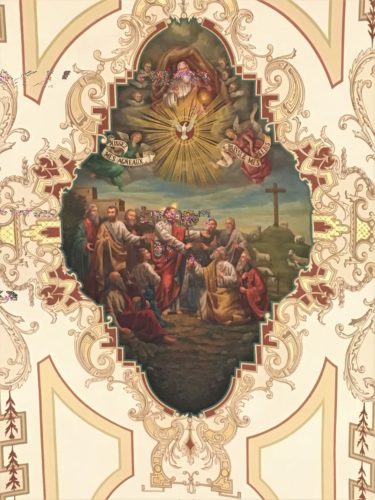
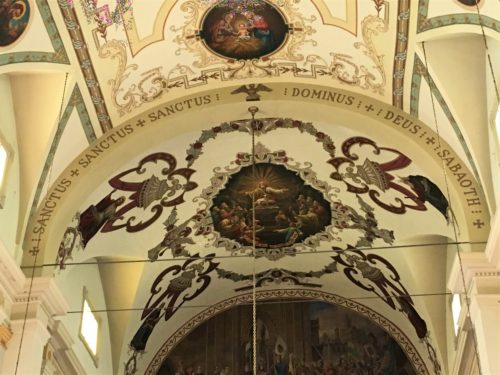
Holy, Holy, Holy Lord
God of Hosts
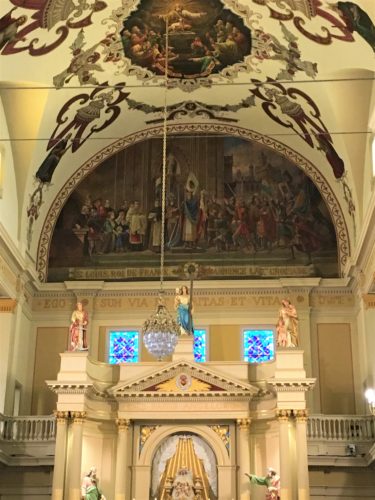
I Am the Way the Truth and the Life
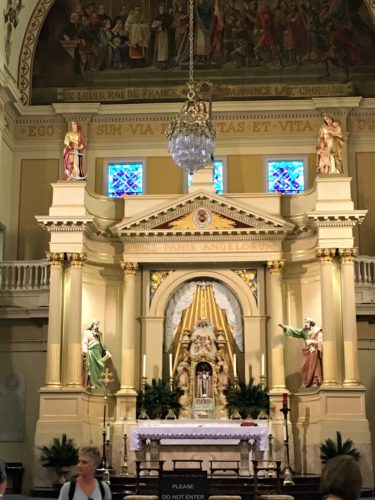
Bread of Angels
Another place we planned on visiting on recommendation, was the Pharmacy Museum. Unfortunately, they were closed today! Strange they’d be closed on a Saturday. ☹
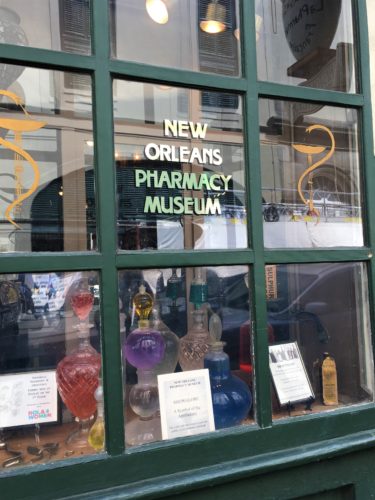
Time to walk to our meeting place for our tour!
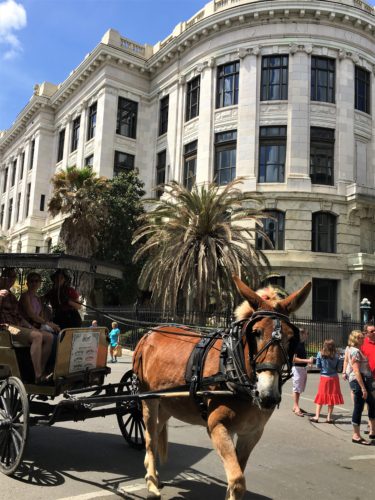
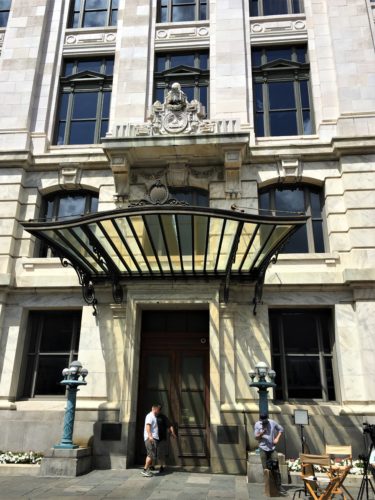
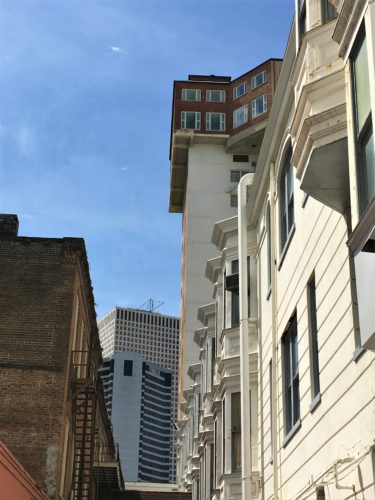
Look up there!!
When we arrived, there were quite a few people standing around outside the restaurant. I didn’t mind, except that with my hearing issues, the further away I have to be, the harder it is to understand – especially if it’s a deep male voice doing the talking, so I was a little concerned about being able to hear on the tour. However, once inside, they broke us up into two groups who went different directions. Yeah!!!
We were blessed to have Ben. Ben not only talks like he’s on an unmiced stage, he’s funny and very knowledgeable! He shared some of the information that we heard from Eric yesterday, but it never hurts to reinforce it! How do you think I was able to remember all that stuff yesterday?? Oh. And in the evening, Ben works as an MC at a burlesque show. . .
The only negative I have to say about this tour had absolutely nothing to do with Ben or the tour. He was saddled with these four older adults who made a habit of carrying on personal conversations between themselves and talking on the phone. They were so rude! Ben just talked over them, stepping close to them occasionally and directing his commentary at them. Even then, they usually ignored him. We couldn’t believe it! He lost them for the final tasting and I know he was glad, and pretty sure everyone else was too!
One of the first things he covered as we waited for our first tasting, was the difference between Cajun and Creole. Cajuns are an ethnic group who mainly live in Louisiana. They are descendants of Acadian exiles. How many of you remember when we were in Canada and talked a bit about how the Acadian people refused to sign loyalty to England against France? Then England gave them the boot without any of their possessions? And I said that some of them ended up in Louisiana? Well, here they are!
Ben speaks French really well and this is what he told us. (No, I’m not going to speak French to you!) When the Acadians got here, they had nothing. To survive, they would eat anything. Some of it, not very tasty. So they started adding spices to make it taste better. They got their name because when anyone asked who they were, the way they pronounced Acadians caused people to misunderstand and everyone thought they said “We’re Cajuns.” Ben said it and he was right, that’s exactly what it sounds like!
The term ‘Creole’ in colonial Louisiana was used to indicate New World products from Old World stock and applied to people, architecture or livestock. As far as people, it refers to those born in Louisiana during the French and Spanish periods, regardless of their ethnicity. It transcends racial boundaries and connects people to their colonial roots no matter what DNA they have – European, African, or mixtures of European, African, French, Spanish and Indian.
Creole food is a style of cooking that originated in Louisiana and blends French, Spanish, Portuguese, Italian, Greek, Asian Indian, Native American and African influences as well as Southern. The most important distinction between Cajun and Creole food is that Cajun arose from the more rustic, provincial French cooking and was adapted by the Acadians to the ingredients they could find in Louisiana and Creole leaned more toward classical European styles that was adapted to what they could find. (I don’t know, this all sounds about the same to me!)
Here’s a list of some terms we learned:
- Boudin Balls (boo’ dan) – a spicy Cajun blood sausage containing meat and rice. (FYI – blood sausages are sausages filled with blood that are cooked or dried and mixed with a filler (rice) until they are thick enough to solidify when cooled. Ours were served deep fried)
- Gumbo (gum’ bow) – a stew or thick soup, usually made with chicken or seafood, greens and always okra
- Jambalaya (jum buh ly’ ah) – well seasoned mixture of rice and meat cooked in one pot
- Laissez bons temps rouler! (lay zay’ lay bawn’ tawmp roo’ lay!) – Let the good times roll!
- Mardi Gras (mar’dee graw) – Fat Tuesday, the season that begins on the twelfth night after Christmas and ends the day before Lent
- Muffuletta (muhf uh let’ uh) – 10” bread with sesame seeds on top split horizontally and filled with marinated olive salad, salami, ham, mortadella, swiss cheese and provolone.
- New Orleans (nah’ lens) – the largest city in Louisiana and home to jazz, fine cuisine, the French Quarter and Mardi Gras
- Parish – a political division resembling counties in other states. Louisiana is the only state with parishes, dating to Napoleon and a strong Catholic influence.
- Po’Boy (just like it looks) – a sandwich served on New Orleans-style French baguette with lettuce, tomato and mayonnaise and roast beef or fried seafood (catfish, crawfish, shrimp or oysters)
- Pork Cracklings (pork crack’ lins) – fried pieces of pork fat with a small amount of skin attached that are flavored after frying with a mixture of Cajun spices. (not the same as pork rinds you can buy in bags at the grocery store)
- Praline (prah leen’) – a cookie-sized confection made especially of butter, brown sugar and pecan, developed in New Orleans in the early 19th century
- Roux (roo) – a mixture of equal parts oil and flour, heated slowly until it’s chocolate brown. The basis for making many dishes or for thickening sauces, soups and stews. Many Louisiana recipes begin with “Firs you make a roux”.
- The Holy Trinity – a triad of aromatic seasoning vegetables – onion, bell pepper and celery. These three items are the base seasoning mixture for most recipes such as gumbos, jambalayas, etouffees, sauces, soups and stews.
- Zydeco (zy’ duh coh) – Popular music of southern Louisiana that combines French dance melodies, elements of Caribbean music and the blues. It’s played by small groups featuring the guitar, the accordion and washboard.
And now, on to the good stuff!!! And you can check the definitions if you need/want to!
We were to sample 10 different items (it was technically more if you counted all the samples at the Pepper Palace!) at 6 different establishments!
First Stop: SoBou (fried pork cracklings, boudin and sweet potato beignets)

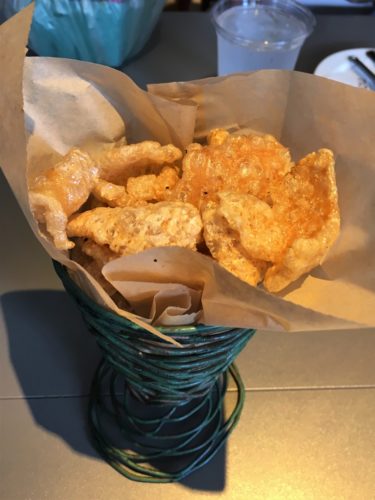
Pork Cracklings
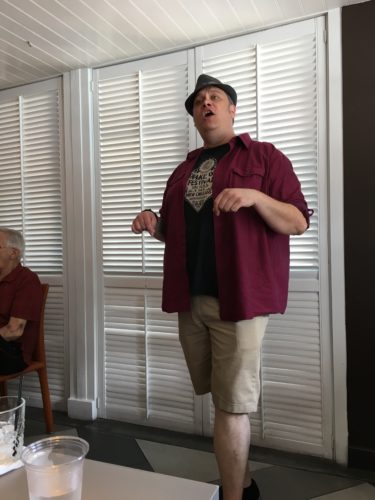
This is Ben
The guy beside him is one of the rude people

Boudin
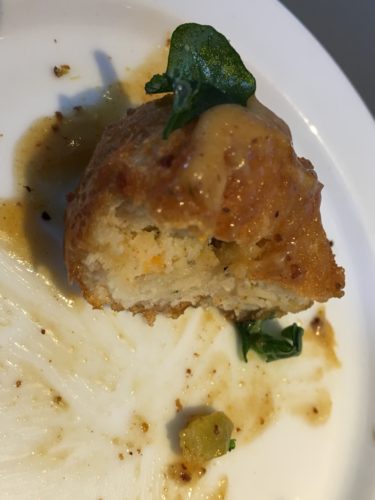
Sweet Potato Beignets
(I almost forgot to take a picture of this one!)
Second Stop: Pepper Palace (samplings of just about anything in-house from hot sauces, to bbq sauces to salsas and they also made us a spicy chicken/cream cheese dip)
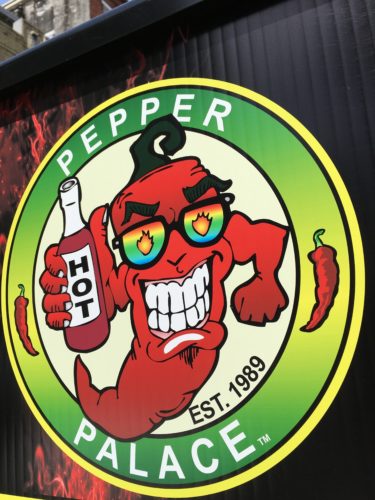
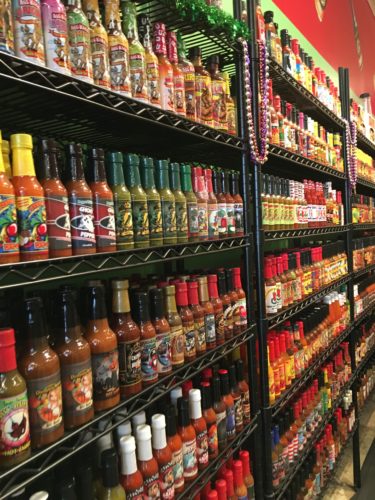
They had tortilla chips out for us to sample with, along with a spicy chicken dip. The dip was really good, but quite hot! I’d try things then go back to the pineapple salsa to cool my tongue!
Third Stop: Leah’s Pralines (of course a praline 😊 and bacon pecan brittle)

These were much, much better quality than the cooking school ones!
Not as ‘gritty’ and better flavor.
The students could learn a lot from Leah!
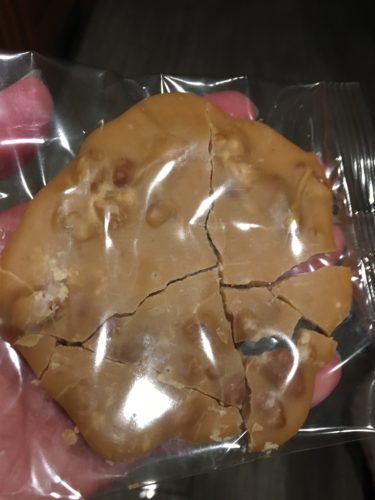
This was whole when they gave it to us. : )
They were so large, Blaine and I shared one and put the other in our pack.

This was good, but we couldn’t taste bacon.
Fourth Stop: NOLA PoBoys (fried catfish po’boy and muffuletta sandwiches)
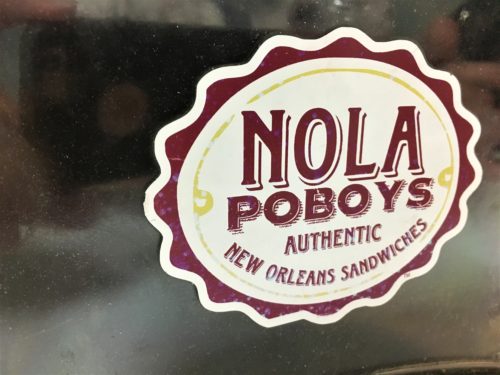
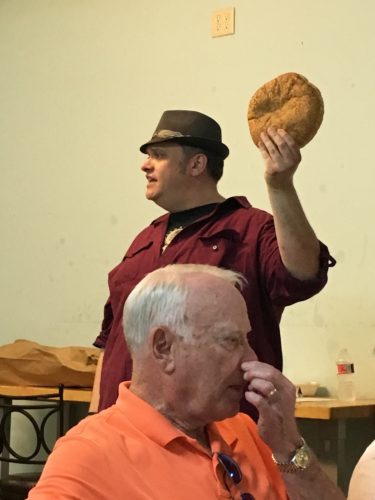
A muffuletta
And one of the rude guys again.
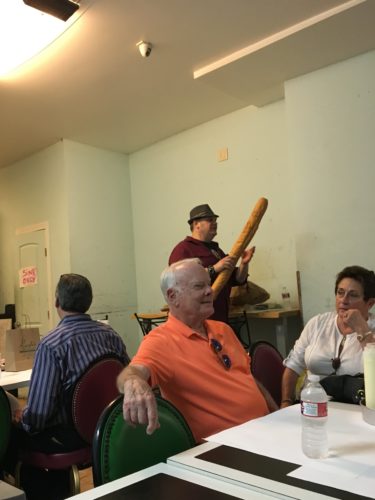
A New Orleans French Bagette (and one of the rude couples)
These baggettes are very soft, but chewy.
Over the course of our time visiting this city, we had two po’boys. The bread here was better.
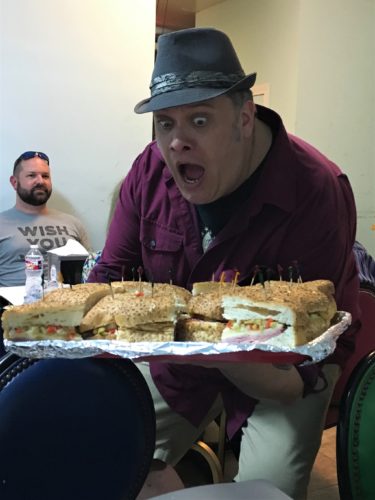
Muffuletta sandwiches
Oh my goodness, were they good! And I don’t even like green olives!
BTW – Ben offered to pose for pictures. Silly man!
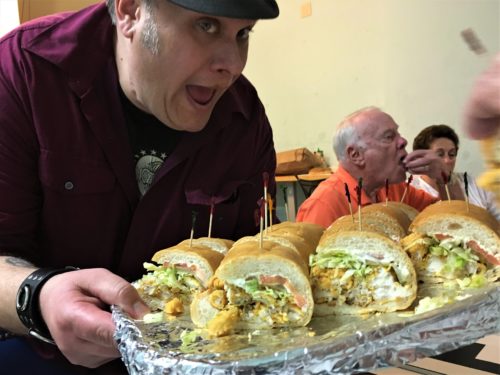
Fried Catfish po’boys
Fifth Stop: Tujague’s (Creole beef brisket and German horseradish sauce)
It’s actually pronounced ‘Two Jacks’. : ) It’s mirror and bar came from Paris in 1856 and at that time, they were already 90 years old! It’s the second oldest restaurant in New Orleans. The brisket and sauce recipe is also over 100 years old.
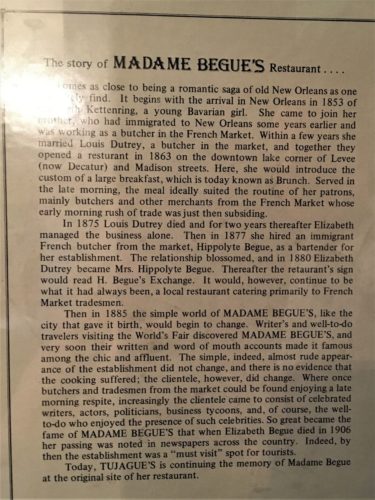
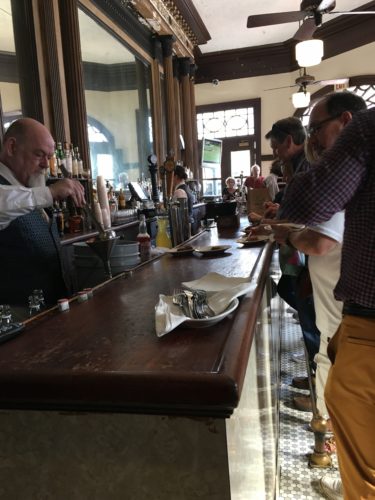
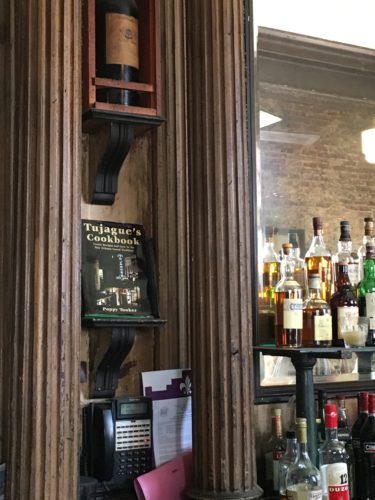
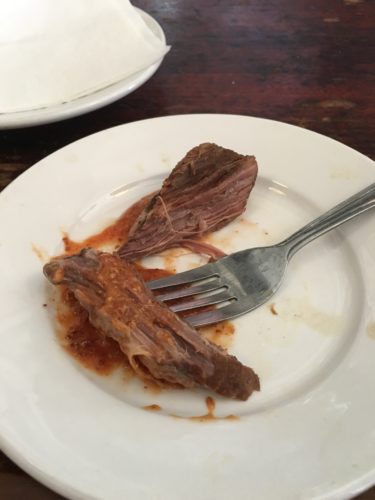
Beef brisket and horseradish sauce. Probably the least favorite of all the food we had today. But it was still really good!!
Sixth Stop: Dickie Brennan’s Tableau (seafood gumbo)
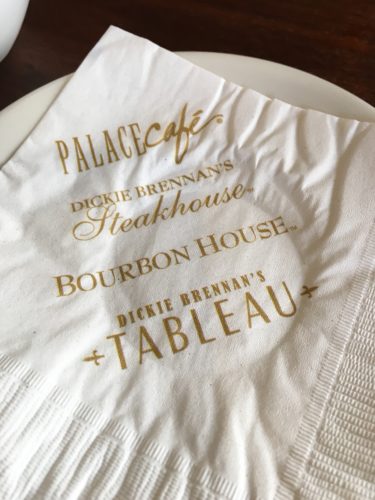
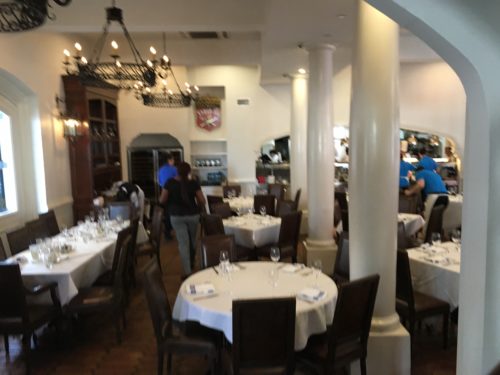
This picture of our dining area came out blurry. Guess I was moving . . .
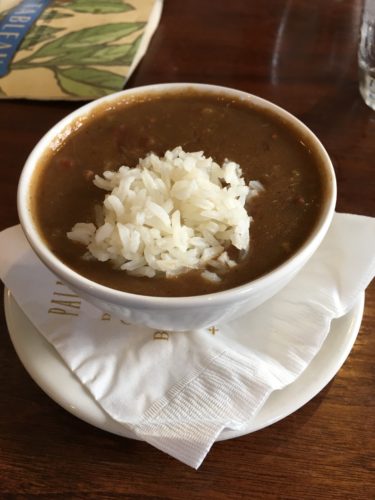
Seafood Gumbo
As we were being served, a Second-line was marching down the street outside our balcony. With Ben’s blessing, we all scampered out to watch and take pictures. Good fun! Unfortunately, both Blaine and I had the idea to video, so no still pictures. But the videos are good!
Three hours later, we’re stuffed full and bid our host a’dieu! (that’s French for ‘goodbye’ 😊)
Time to walk some of this off! As we wandered back to our transportation, we found ourselves in some of the same familiar places, so there aren’t very many new pictures.
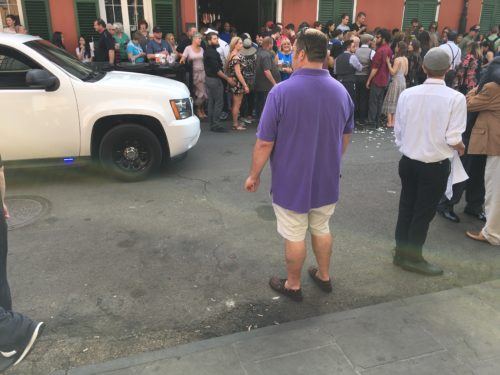
There were waaaaayyy more people and cars around the French Quarter today, but then it is Saturday.
Still, it was hard to even walk sometimes and seemed nearly impossible to drive through. Glad we had the ferry!
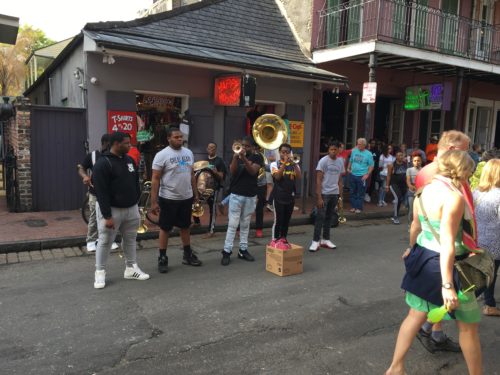
We already know we’ll be back another day.
TOTAL HIKING MILES: 6
Year To Date: 237
Daily Average: 2.89
